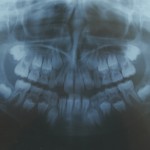
Upper canines normally erupt between the ages of 11-12 and between 2-3% are displaced palatal in Europeans. Surgical exposure followed by orthodontic realignment is commonly undertaken. Two surgical approaches, an open or closed technique are used. There is no consensus regarding a preferred approach and a recent review called for more high-quality studies.
The aim of this multicentre trial was to compare closed and open surgical techniques in PDC cases for surgery time, complications, and patients’ perceptions, such as experience of pain, discomfort, analgesic consumption, and impact on daily activities.
Methods
Patients aged 9-16yrs with uni- or bilateral PDCs planned for surgical exposure and orthodontic alignment, were randomised to closed or open surgical exposure. In closed exposure, an attachment with a chain was bonded to the canine and the flap was sutured back with the chain penetrating the mucosa. In open exposure, a window of tissue around the tooth was removed and glass ionomer cement placed on the canine crown, to prevent gingival overgrowth during spontaneous eruption. Patients received verbal and written information on analgesia (Paracetemol) and chlorhexidine mouthwash.
Outcome measures were obtained from dental records and questionnaires from operation until 4 weeks post operatively. Information on pain was collected on the evening of surgery and 7 days post-op. Surgeons had many years’ surgical experience and were calibrated in both procedures. Outcome assessors were blinded to the intervention. The study was powered to detect a difference in total treatment time
Results
- 120 patients, mean age of 13.4 years (SD 1.46) were randomised.1 dropped out
- Of the 119 participants 75 were girls and 44 boys.
- 60 patients had a closed exposure and 59 an open exposure.
- A majority of patients (56.7% in closed group and 55.9% in open group) had local anaesthesia with nitrous oxide sedation.
- There was a slightly longer surgery time, although non-significant, in the closed exposure group than in the open group
- Mean surgery time for the bilateral cases were 12.7 min (closed group) and 14.6 min (open group) longer than those in the unilateral cases.
- Complications though were more severe in bilateral cases and the patients experienced more pain and impairment in the open group.
Conclusions
The authors concluded: –
There were no statistically significant differences regarding surgery time between the groups. Complications were similar between the exposure groups in unilateral cases and more common in the open exposure group in bilateral cases. More patients in the open group experienced pain and impairment compared to the closed group.
Comments
This well conducted and reported trial is was one of the ongoing studies identified in the 2017 Cochrane review (Dental Elf – 25th Aug 2017) which identified just 3 studies comparing the two approaches The Cochrane review concluded that
the evidence suggests that neither the open or closed surgical technique for exposing palatally displaced maxillary canine teeth is superior for any of the outcomes included in this review
The main finding from this trial is greater post-operative pain from the open surgical approach. It was seen that more patients having bilateral procedures had more post-operative pain which may be anticipated. This finding contradict the findings of two of the three trials included in the Cochrane review so would benefit from the findings from additional studies. As well as the trial we report here the Cochrane review identified two further trials being conducted on this questionwhihc may may bring further clarity.
Links
Primary Paper
Björksved M, Arnrup K, Lindsten R, Magnusson A, Sundell AL, Gustafsson A, Bazargani F. Closed vs open surgical exposure of palatally displaced canines: surgery time, postoperative complications, and patients’ perceptions: amulticentre, randomized, controlled trial. Eur J Orthod. 2018 Nov 30;40(6):626-635. doi: 10.1093/ejo/cjy070. PubMed PMID: 30321323.
Other references
Dental Elf – 25th Aug 2017
Palatally displaced canines: open or closed surgical exposure?
